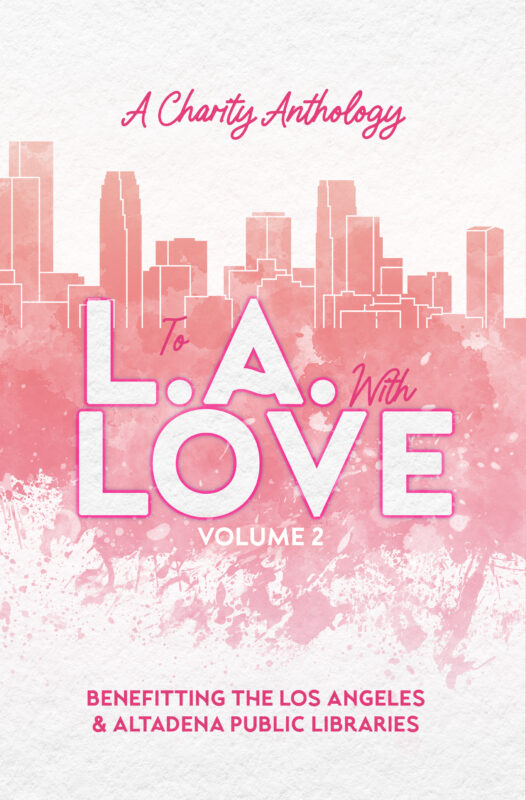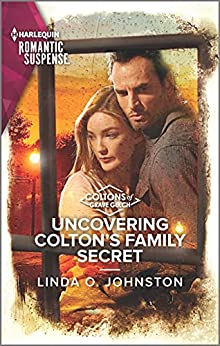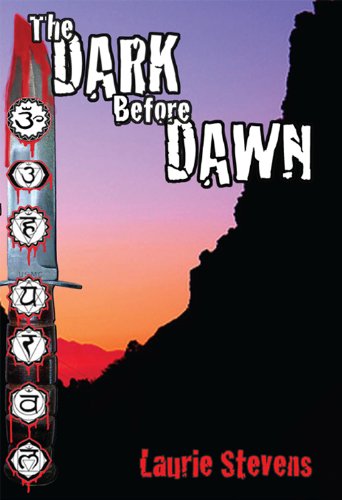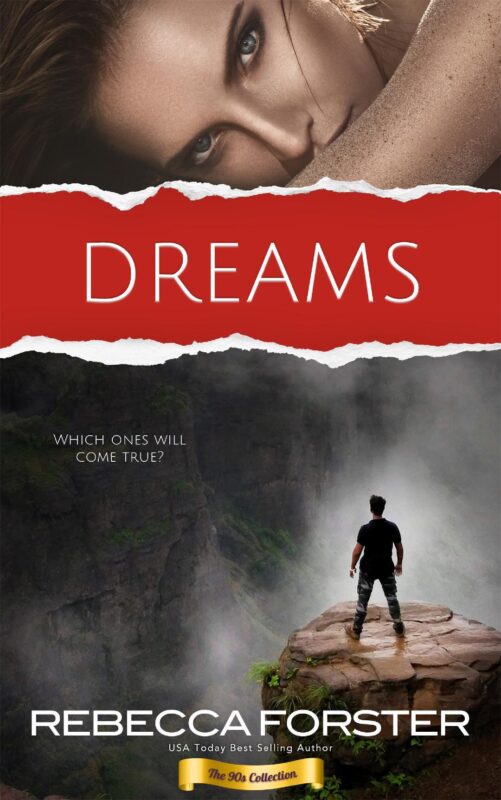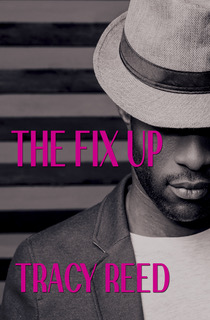He Drove Right Into My Story
October 20, 2020 by Meriam Wilhelm in category A Bit of Magic by Meriam Wilhelm tagged as brainstorming, editing, husbands, inspiration
Driving
My husband and I went driving through the hills of Palos Verdes last Sunday afternoon. He drives a too tiny for me sports car that he absolutely loves and that I find rather confining. It was a beautiful day outside. The California coastal skies were clear. The ocean waves were gentle and incredibly tempting. For October, it was surprising just how many people were still enjoying our ocean waters.
But the air was overly warm and all I really wanted to do that particular Sunday was to stay inside with a good book. I had just finished writing my latest book and was well into the editing process and I was pretty sick of the whole thing. I still had not come up with a title, although there were several roaming randomly throughout my brain.
As much as I knew that I had work to do, I had grown tired of correcting punctuation marks and hunting for run on sentences. And so, really and truly, the only thing I wanted to do was to read my copy of Mary Higgins Clark & Alafair Burke – You Don’t Own Me. I had started it over a month ago and had just not found the time to get further into it. It had waited patiently for me on my desk for over a month.
Anyway, back to the car ride.
So my husband convinced me that the best way to get my book fully edited was to take a ride, clear my head and find something else to think about. “You’ll be sharper after you spend some time away,” he said, not really caring about my head but more about having company on his ride past the beach and through the still green hills.
We started our journey off with me offering up potential titles for my book and him coming up with sillier versions to distract me. To my surprise, he also came up with a few good ones. I was just about to launch into a discussion of why I might actually like his last suggested title when a strange man in a most unusual white car drove into the lane next to us. Our car being a lower to the ground Pontiac Solstice, I found myself having to look upward at the driver. The man, apparently aware of my interest, pivoted his gaze down on me, tipped his hat, smiled and promptly drove off.
Interesting Guy
“What an interesting guy,” I said. “I love his fedora hat (it was a strange shade of blue), but what the heck is he driving?” I asked my husband, who is well versed in the automobile world and knows far more about cars than I could ever hope for.
“A Morris Minor. A 1950 something model, I think,” he said.
Hitting the gas, while hoping to avoid a P.V. cop or two, my husband took off after the beautifully polished white car. “It’s a British made car. Came out after the war. Think it’s named after the guy who designed it.” (See, I told you he knows a lot about cars!)
“That car is older than me!” I said. “And the guy driving it looked like he could be the original owner.” Okay, so maybe I exaggerated a little, but the gentleman did look really old and his style of dress did not speak of Southern California. I think he might even have been wearing tweed on a ninety degree day!
We followed the car and the interesting character chauffeuring it through the hills for a few more minutes before the man turned off on a side street and we lost him. But in that short time, the infamous Morris Minor driver was tattooed on my brain. My husband and I drove home and I raced to my computer to learn all I could about the car I’d just seen.
Character
A few minutes later, my husband stuck his head in my office door and said, “You need to include that guy in one of your books. Stetson…”
“What about Stetson?” I asked.
“That’s what you should call him.”
And so I will. The man in the blue Fedora, wearing tweed and drive a 1950 something Morris Minor car. Hmm, can’t wait to start. And, of course, I’ll name him Stetson.
~Meriam
Books by Meriam Wilhelm
Masque, Masquerade, Mask
August 19, 2020 by Jenny Jensen in category On writing . . . by Jenny Jensen tagged as characterization, editing, writing No! I’m not going to weigh in on the mask vs no mask debate. Really.
No! I’m not going to weigh in on the mask vs no mask debate. Really.
I am an inveterate people watcher. Sometimes I go overboard and get caught staring — awkward. Honestly, it’s not you I’m looking at, it’s the potential character the physical ‘you’ suggests to me. I’m pretty sure all writers do that to one degree or another. It can’t be helped. Some people just like a (too) kindly grandmother, or a shifty con man or a fairy princess or a sharkish accountant.
Faces reveal so much, from hidden agendas to unspoken feelings, spontaneous joy to suppressed fury. It’s fertile ground for the writer. Anne Perry uses the reading of facial expressions to heighten tension and create suspense. In her hands it’s a plot device and she’s brilliant at it. Add body language to that and a character comes fully to life. It’s also a great way to stomp down those unwanted dialog tags; showing the reader who’s speaking is miles better than telling.
Just watching the emotional beats revealed on the faces of two friends having coffee can jumpstart a story and the story can shift and morph if I switch genres in my head. (Yep, I start a lot of imaginary tales. It’s more fun than Sudoku.) Narrowed eyes and rigid lips mean one thing in a spy thriller and quite another in a romance. Add the tilt of the head and a clinching of fists and it could work for either the inciting incident or the denouement.
Now most of us are masked and I have to shift my game. We’re all consciously trying to keep a six-foot distance and it makes for some very stilted body language! A woman turned from the pasta aisle just as I was turning in, our carts nearly colliding. That’s a common enough occurrance at the grocery store and usually each party smiles and laughs and maneuvers on their way. I found myself braying an exaggerated laugh, shrugging my shoulders and my “oh sorry” came out a bit over bright. It was the mirror response of this woman. We couldn’t read each other’s faces. An apologetic smile doesn’t do it any longer.
They say we need to adjust to a new normal. I’m not sure what that’s supposed to mean, but I can imagine all this maskedness and artful distancing will add some very intriguing elements to contemporary fiction. How will strangers meet and grow a romance? Is love at first sight a victim of the pandemic? How will antagonists make use of the fact that with a baseball cap, sunglasses and the compulsory mask one is virtually unidentifiable? Think of the wonderful mix-ups this could lead to. Great fodder for screw-ball comedy. Or great fodder for murder and mayhem.
It will be impossible to ignore Corvid in writing contemporary stories. At the very least it will have to serve as atmosphere, but there are elements of this awful reality that present nearly endless plot possibilities — as nearly endless as this shutdown feels. I can’t wait to read them.

Jenny Jensen
Editor
0 0 Read morePORTMANTEAUS*
July 19, 2020 by Jenny Jensen in category On writing . . . by Jenny Jensen, Writing tagged as #writing, editing, words
We’re so lucky. The English language is like play dough.
Oh yes, we have strict rules of grammar, tense, POV, all the way to the minutia of intransitive verbs. We can choose from a number of eminent grammar and style guides to ensure conformity. We have stalwart English teachers to drill those rules into our heads so that we are all on the same page. (And bless them all – there is nothing better than order over chaos). But despite those rules a writer has so much freedom to shape our mother tongue into forms wry, brittle, silly, heartbreaking, snarky or just plain mad.
I don’t have much command of any other language; a smatter of German, a soupçon of French, about a third cup of Latin and a healthy plateful of Spanish. But I do know that the rules of those languages are not as forgiving as English — not as much room to roam before you run afoul of the language police. English allows us to mangle all the rules of spelling, meaning, and sentence structure to reflect dialect, or character traits, add color, shift perceptions or mood and anyone with a good command of English can understand — and only pedants ever complain. Of course, you have to use the rules of punctuation. Gotta have those traffic signs.
Anthony Burgess used bits and pieces of Russian mixed with Shakespearian English and other tongues to give us Nadsat, the terrifyingly unique argot of his dark characters in A Clockwork Orange. The reader may have had to work at it a bit, but it was intelligible and colored the story with an unforgettable feel. Fantasy and Sci Fi from J.K. Rowling to Ursula K. Le Guin play with all sorts of mixed up language that become magical words and when you’re reading in those worlds you understand.
Dialect and special vocabulary enrich a tale on many levels and I’m in awe of those writers who do them well, but my favorite form of play dough English is the portmanteau. Anybody can create one of these inventive combinations, and everybody does — usually with something faintly deprecating or ironically funny in mind. And with just one word a portmanteau can ooze with meaning. Frenemy speaks volumes — we’ve all had one and it’s exhilarating to give ‘em a proper name. Craptacular very neatly wraps up the verdict on so much of our over-hyped media. And then there’s pompidity, my own invention from University days when I struggled to describe the quality of politicians.
All writers love words. Words are paint, chisel, fabric, and clay for our creativity. If you can’t find that one word that perfectly reflects your intent, try cobbling a new one together — no one will take points away. Blog is a portmanteau (web log) so if you’re lucky enough to have your portmanteau go viral, you might wind up in the OED.
 With a BA in Anthropology and English Jenny pursued a career in advertising and writing and segued into developmental editing. She has worked on nearly 400 books during her career. Her clients include both traditionally published and indie authors. She has worked in every genre from romance to horror and thrillers as well as edited Air Force manuals, commercial communications and memoirs. She offers every service from copyediting to developmental coaching.
With a BA in Anthropology and English Jenny pursued a career in advertising and writing and segued into developmental editing. She has worked on nearly 400 books during her career. Her clients include both traditionally published and indie authors. She has worked in every genre from romance to horror and thrillers as well as edited Air Force manuals, commercial communications and memoirs. She offers every service from copyediting to developmental coaching.
*This blog is an oldie but goodie, originally published in March, 2018
2 0 Read more
When a writer needs a hug… by Jina Bacarr
July 11, 2020 by Jina Bacarr in category Jina’s Book Chat, Writing tagged as books, editing, historical, Paris, writing, WW 2
Writing never gets easier… if anything, it’s more difficult.
Why? Because we expect more of ourselves. Even more so when you’re doing edits from your fab editor who’s really an angel in disguise. We want to make our story as perfect as possible and not disappoint her. She believes in you. Your characters believe in you. After all, their lives are in your hands.
But like a chocolate soufflé, a lot can go wrong.
Your computer screen goes blue… computer updates send your heart pounding as you pray you get all your pretty icons back…. a character keeps you up at nights because you’re so worried about how you’re going to save her butt and yours.
There’s more:
You go over your word count.
You can’t find your timeline/fact sheet for your heroine (when you’re writing about Paris during WW 2 this is crucial).
You ‘re so tired, you push the wrong button on your keyboard and everything in Track Changes disappears
You realize a secondary relationship ain’t working because the hero is based on an old boyfriend with a big ego. You dump him. Get a new guy for the part. And he’s an absolute dream.
You work from dawn-to-dawn the week before edits are due and have no idea what day it is.
And worst of all, you run out of coffee.
But I did it!
I sent my editor the edited manuscript at 7:37 a.m. on a sunny morning… and I felt numb. No whistles went off. No bells. Just the quiet hum of my computer.
I needed a hug.
Someone telling me ‘I done good’.
Yes, I’m totally proud of what I accomplished, but writing can be a lonely business. And it’s hard work, especially writing historicals. (My story follows a dual timeline from 1926 to 1950 and present day. Silent films, Nazis in Paris, the film business in Hollywood and France.)
So I did what I swore I wouldn’t after I sent the m/s: I opened it back up and read some of my favorite passages. Laughed and cried again with my characters… sat amazed at how they accomplished their goals… fell in love with them all over again… and cheered when they beat the Nazis!
And I got that hug.
From my characters. Reminding me why I write. Because I so love them, the stories, the chance to give them life.
So, merci beaucoup, mes bons amis! Thank you, my friends.
Jina
PS — I’ll keep you posted on my Paris WW 2 historical. Cover ideas coming soon…
4 0 Read moreAs a Writer, Is Talking to Yourself a Bad Thing?
May 3, 2020 by Janet Elizabeth Lynn and Will Zeilinger in category Partners in Crime by Janet Elizabeth Lynn & Will Zeilinger, Writing tagged as editing, lockdown, writing
Is Talking to Yourself a Bad Thing?
I’ve seen jokes and memes all over social media that describe how being self-isolated or “quarantined” during this COVID-19 pandemic has had one of two effects.
The first has been an overwhelming feeling of being trapped or imprisoned, with no opportunity for social interaction. If you have kids, and they are home, they have to be fed and watered, educated, entertained, and of course, experience some quality time with you. Even if you don’t have kids or parents in your home, there’s always laundry and dishes, all those things on your to-do list you’ve been putting off until you had “time.” Things like home repairs, organizing, binge watching all those programs and movies, you’ve recorded, and naps . . . yes, naps. The thing is, you aren’t trapped.
How are you using your self-isolation?
The second feeling has been one of great relief, as being shut up in one’s domicile provides the writer with the opportunity to get that story or book onto paper (or at least into the computer’s memory.) This second opportunity can also be seen as the chance to see ourselves in the mirror of truth.
Let me put it this way: Let’s assume you are a serious writer, whether it be a journalist, essayist, short-story author, non-fiction, or fiction novelist. What exactly has been keeping you from writing that thing you write? Is it your job? There’s that daily commute that can eat up a couple to several hours each day. Does the boss hover over your shoulder so you have no chance to put down a few paragraphs each day? Is it your chores, like taking the kids to school or daycare, picking them up, and taking them to their extra-curricular activities (soccer, dance, scouts, etc.?) Do you have a second job?
During the time we are all confined (at least, we should be) have we learned anything about ourselves and our writing process?
In that vein, there is another advantage to this situation—that is being able to read your WIP out loud to yourself or to those at home with you. Reading your work aloud helps you catch the rhythm of your writing, especially in early drafts. Though you may not be commuting, those hours can be spent refining dialog, grammar and even some holes in story or essay.
If you happen to live alone, you may have access to a recorder or use your computer to record and playback what you’ve read aloud. Even if you aren’t ready to read it to the world, your family and yourself are all great critique partners.

Go ahead and read—aloud. You’ll never go back to just reading over the page.
~Will
P.S. To those of you who are essential workers—thank you and stay well. We all want to read the stories that will come from all this.
Books by Janet Elizabeth Lynn and Will Zeilinger
Affiliate Links
A Slice of Orange is an affiliate with some of the booksellers listed on this website, including Barnes & Nobel, Books A Million, iBooks, Kobo, and Smashwords. This means A Slice of Orange may earn a small advertising fee from sales made through the links used on this website. There are reminders of these affiliate links on the pages for individual books.
Search A Slice of Orange
Find a Column
Archives
Featured Books
To L.A. With Love Volume 2
When wildfires damaged two beloved Los Angeles public libraries in January 2025, the romance community answered with heart.
More info →UNDERCOVERING COLTON’S FAMILY SECRETS
Coming face-to-face with her past…
More info →THE DARK BEFORE DAWN
High in the Santa Monica Mountains near Los Angeles, grisly murders are taking place.
More info →Newsletter
Contributing Authors
Search A Slice of Orange
Find a Column
Archives
Authors in the Bookstore
- A. E. Decker
- A. J. Scudiere
- A.J. Sidransky
- A.M. Roark
- Abby Collette
- Alanna Lucus
- Albert Marrin
- Alice Duncan
- Alina K. Field
- Alison Green Myers
- Andi Lawrencovna
- Andrew C Raiford
- Angela Pryce
- Aviva Vaughn
- Barbara Ankrum
- Bethlehem Writers Group, LLC
- Carol L. Wright
- Celeste Barclay
- Christina Alexandra
- Christopher D. Ochs
- Claire Davon
- Claire Naden
- Courtnee Turner Hoyle
- Courtney Annicchiarico
- D. Lieber
- Daniel V. Meier Jr.
- Debra Dixon
- Debra H. Goldstein
- Debra Holland
- Dee Ann Palmer
- Denise M. Colby
- Diane Benefiel
- Diane Sismour
- Dianna Sinovic
- DT Krippene
- E.B. Dawson
- Emilie Dallaire
- Emily Brightwell
- Emily PW Murphy
- Fae Rowen
- Faith L. Justice
- Frances Amati
- Geralyn Corcillo
- Glynnis Campbell
- Greg Jolley
- H. O. Charles
- Jaclyn Roché
- Jacqueline Diamond
- Janet Lynn and Will Zeilinger
- Jaya Mehta
- Jeannine Atkins
- Jeff Baird
- Jenna Barwin
- Jenne Kern
- Jennifer D. Bokal
- Jennifer Lyon
- Jerome W. McFadden
- Jill Piscitello
- Jina Bacarr
- Jo A. Hiestand
- Jodi Bogert
- Jolina Petersheim
- Jonathan Maberry
- Joy Allyson
- Judy Duarte
- Justin Murphy
- Justine Davis
- Kat Martin
- Kidd Wadsworth
- Kitty Bucholtz
- Kristy Tate
- Larry Deibert
- Larry Hamilton
- Laura Drake
- Laurie Stevens
- Leslie Knowles
- Li-Ying Lundquist
- Linda Carroll-Bradd
- Linda Lappin
- Linda McLaughlin
- Linda O. Johnston
- Lisa Preston
- Lolo Paige
- Loran Holt
- Lynette M. Burrows
- Lyssa Kay Adams
- Madeline Ash
- Margarita Engle
- Marguerite Quantaine
- Marianne H. Donley
- Mary Castillo
- Maureen Klovers
- Megan Haskell
- Melanie Waterbury
- Melisa Rivero
- Melissa Chambers
- Melodie Winawer
- Meriam Wilhelm
- Mikel J. Wilson
- Mindy Neff
- Monica McCabe
- Nancy Brashear
- Neetu Malik
- Nikki Prince
- Once Upon Anthologies
- Paula Gail Benson
- Penny Reid
- Peter J Barbour
- Priscilla Oliveras
- R. H. Kohno
- Rachel Hailey
- Ralph Hieb
- Ramcy Diek
- Ransom Stephens
- Rebecca Forster
- Renae Wrich
- Roxy Matthews
- Ryder Hunte Clancy
- Sally Paradysz
- Sheila Colón-Bagley
- Simone de Muñoz
- Sophie Barnes
- Susan Kaye Quinn
- Susan Lynn Meyer
- Susan Squires
- T. D. Fox
- Tara C. Allred
- Tara Lain
- Tari Lynn Jewett
- Terri Osburn
- Tracy Reed
- Vera Jane Cook
- Vicki Crum
- Writing Something Romantic
Affiliate Links
A Slice of Orange is an affiliate with some of the booksellers listed on this website, including Barnes & Nobel, Books A Million, iBooks, Kobo, and Smashwords. This means A Slice of Orange may earn a small advertising fee from sales made through the links used on this website. There are reminders of these affiliate links on the pages for individual books.





























